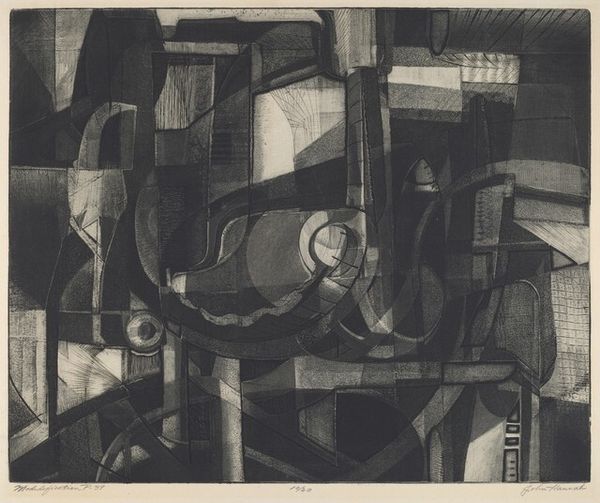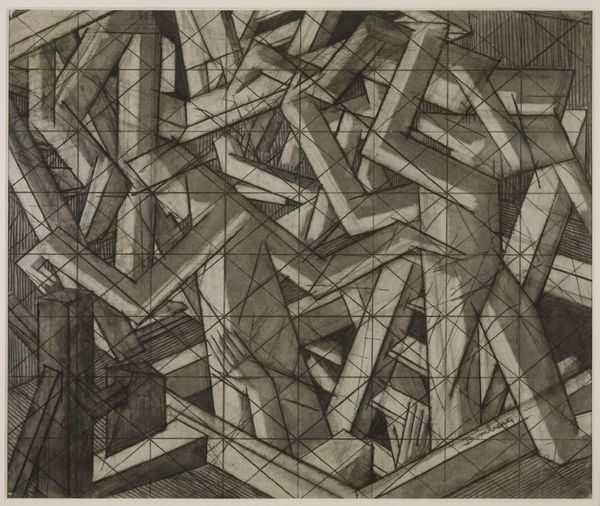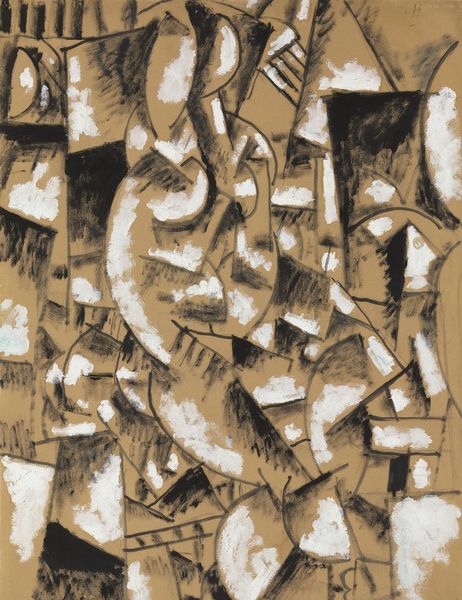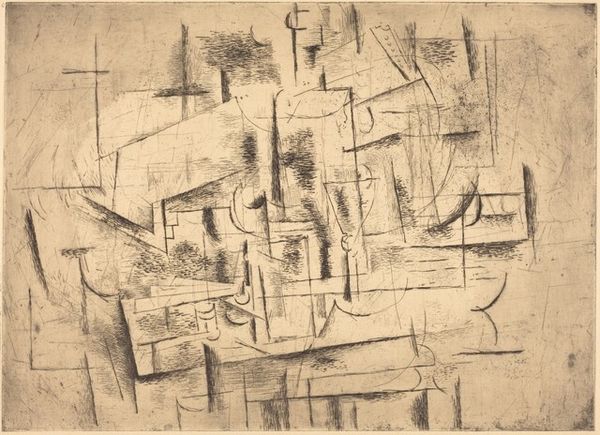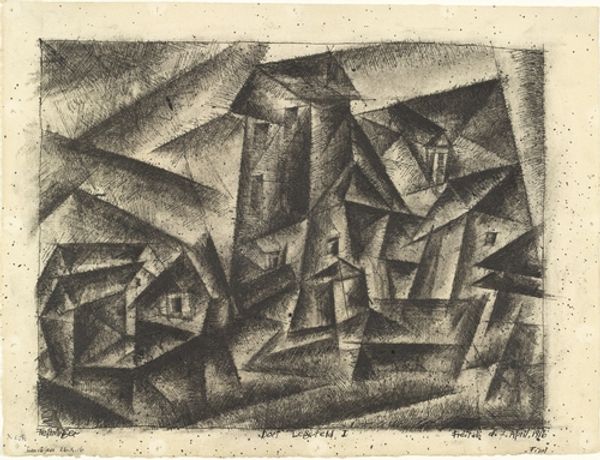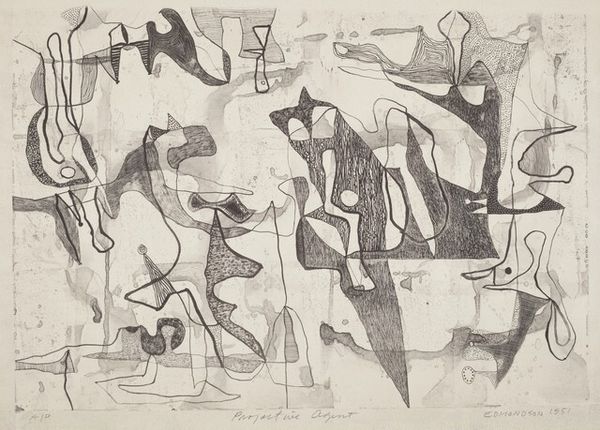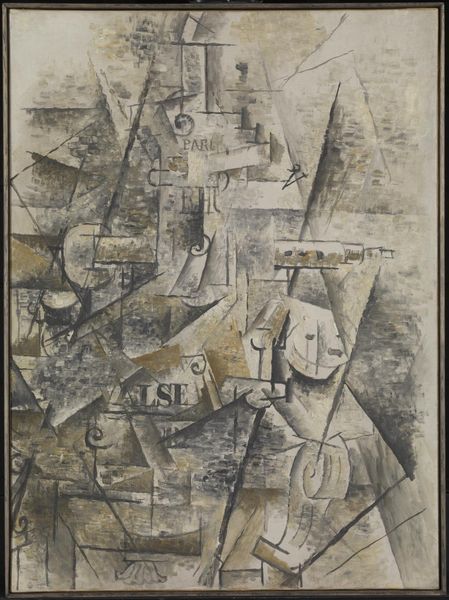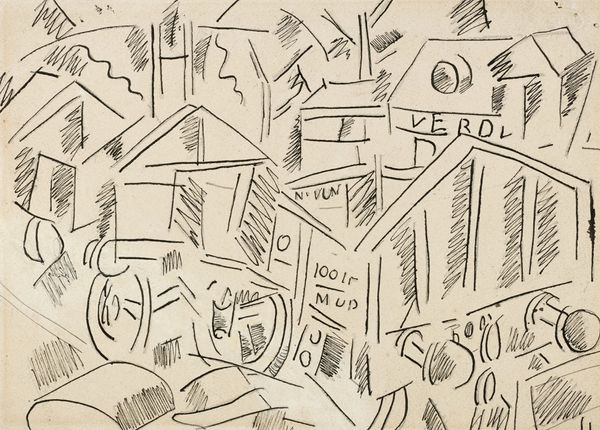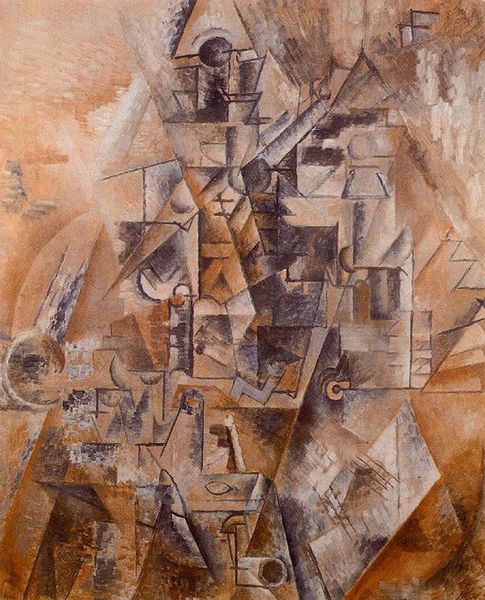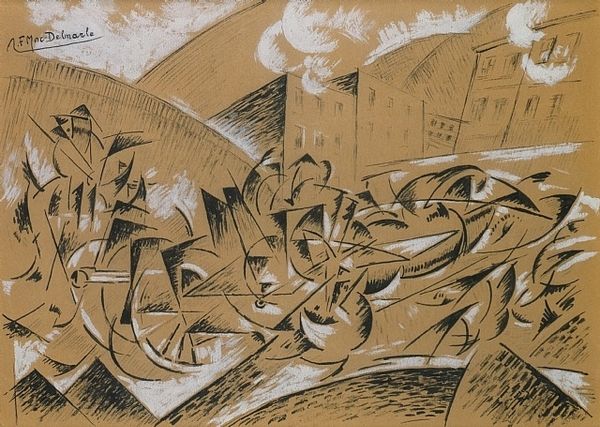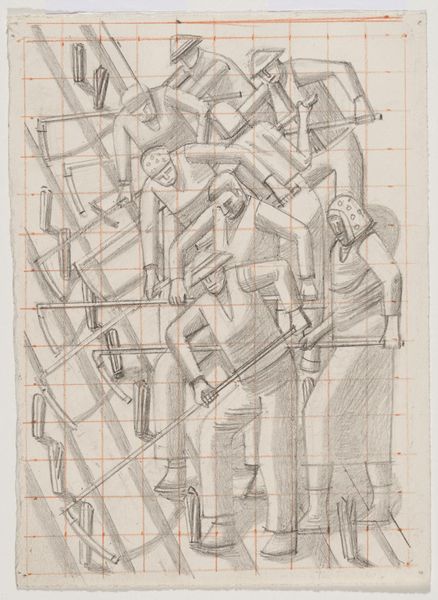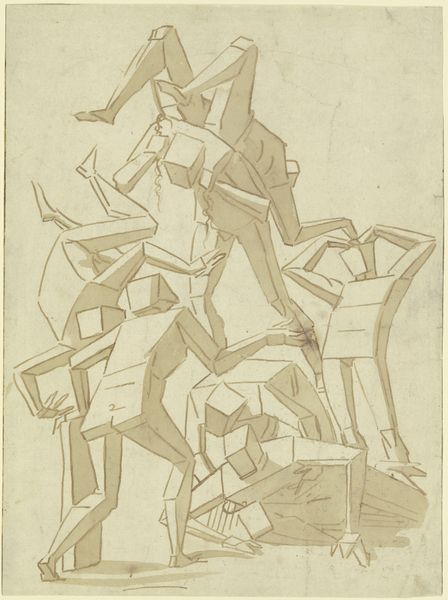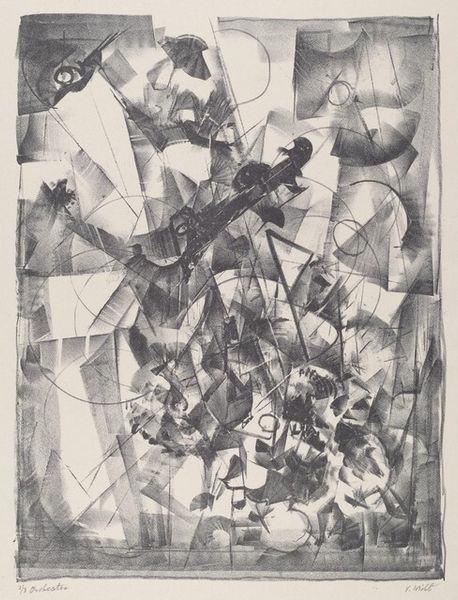
Dimensions: support: 565 x 686 mm
Copyright: © Tate | CC-BY-NC-ND 4.0 DEED, Photo: Tate
Curator: This arresting image is David Bomberg's "Study for ‘The Vision of Ezekiel’," housed here at the Tate. Editor: Wow, my first thought? Claustrophobia. All those figures crammed into...are those boxes? It feels tense. Curator: Absolutely. Bomberg, a Jewish artist, was deeply engaged with biblical themes, especially regarding diaspora and displacement. The grid structure emphasizes confinement and perhaps alludes to the fragmentation of identity. Editor: It's like they're trying to break free, reach for something, but they're trapped in this...geometric nightmare. It makes you wonder what Ezekiel saw that inspired this. Curator: Indeed. Bomberg's focus shifted away from more literal representations to explore the emotional and psychological states of collective experience, reflecting the turbulence of the early 20th century. Editor: Yeah, there’s definitely an underlying sense of collective anxiety. It’s interesting to see that tension translated into such a structured composition, though. Curator: Bomberg's radical approach to representing the human form and his exploration of geometric abstraction invite us to consider how collective trauma shapes individual experiences. Editor: It’s a pretty powerful statement about the struggle to maintain your humanity in a world that feels increasingly, well, boxed in.
Comments
tate 6 months ago
⋮
http://www.tate.org.uk/art/artworks/bomberg-study-for-the-vision-of-ezekiel-t01681
Join the conversation
Join millions of artists and users on Artera today and experience the ultimate creative platform.
tate 6 months ago
⋮
Bomberg was never officially a member of the Vorticist Group although he was closely associated with the Vorticists. Between 1911 and 1913 he studied at the Slade School of Art, where his single-minded exploration of pictorial structure influenced fellow student William Roberts. Both this study and Roberts's 'The Return of Ulysses' indicate a shared interest in the depiction of dynamic forms. This is the last of three studies for 'The Vision of Ezekiel'. It has been squared up for enlargement. The sense of struggle between the figures is stronger in the studies than in the final painting. Bomberg's brother was a professional wrestler and a wrestling match may have provided the basis of Bomberg's picture. Gallery label, September 2004
